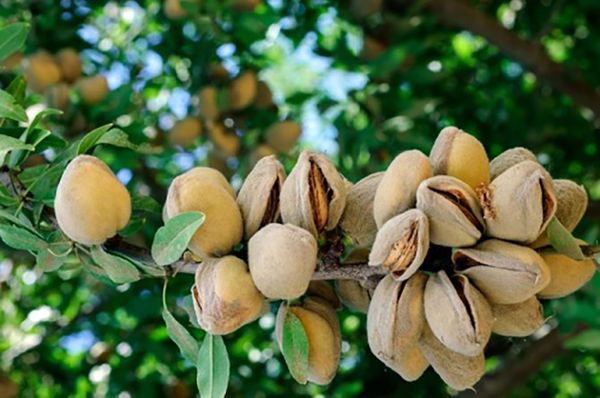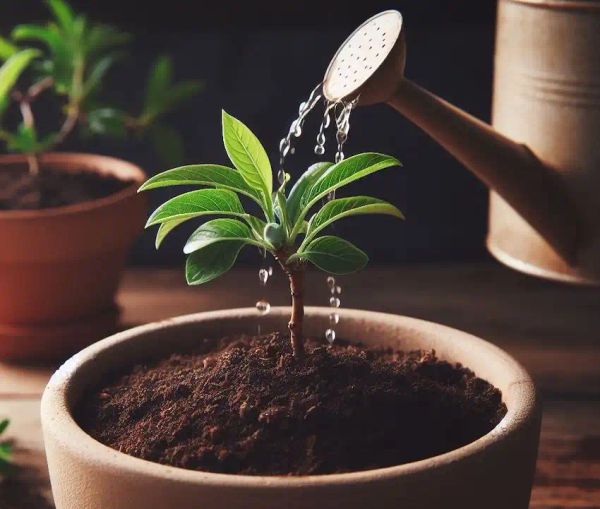Growing an almond tree from a seed at home can be a rewarding and enjoyable process. Not only will it provide you with a beautiful tree, but also delicious nuts that you can enjoy for years to come. Here’s a friendly guide on how to do it:

Step 1: Get Almond Seeds
Selecting Seeds: Start by choosing high-quality almonds that are raw, fresh, and unprocessed. You can either use almonds directly from another tree or purchase raw, unprocessed, and untreated almonds.
Stratification: Almond seeds need a cold treatment called stratification to encourage germination. Soak the almonds in water for 48 hours, then wrap them in a moist paper towel, place inside a plastic bag, and refrigerate for a few weeks. This will help simulate the winter conditions that the seeds need to sprout. 
Step 2: Planting the Seed
When to Plant: Spring is the best time to plant almond seeds.
Preparing the Soil: Almond trees prefer well-draining soil with a pH level of around 6-7.5. Before planting, enrich your planting area with compost.
Planting Depth: Plant the seeds 2-3 inches deep in the soil and water it thoroughly.
Location: Choose a sunny location, as almond trees require full sunlight to thrive.
Step 3: Caring for Your Almond Tree
Watering: While the tree is young, ensure it gets regular water, especially in dry periods. Mature trees are quite drought-tolerant but will produce better with consistent watering.
Pruning: In the initial years, focus on developing a strong, healthy framework for the tree. In subsequent years, prune to encourage sunlight and air circulation, which can minimize disease risk.
Fertilizing: Use a balanced fertilizer to nourish the tree, especially during the growing season. 
Step 4: Protecting the Tree
Pests and Diseases: Keep an eye out for common pests like aphids and diseases like fungal infections. Employ preventative and curative measures as needed.
Winter Protection: Young almond trees may need protection during harsh winters. Using mulch and protective wraps can help safeguard them from chilly winds and extreme cold.
Step 5: Harvesting Almonds
Waiting Period: Almond trees typically begin to produce nuts in the 3rd or 4th year, and reach full production after 5-6 years.
Harvest Time: Almonds are usually ready to harvest in late summer to early fall. Look for split hulls and visible shells to determine if they are ready.
Drying: Once harvested, allow the almonds to dry in a cool, dry place for a week before storing them.
Step 6: Enjoying the Rewards
Roasting and Eating: Now that you have harvested your almonds, you can roast them for a tasty snack or use them in your cooking.
Admiring the Blossoms: Almond trees provide beautiful blossoms in the spring, adding a touch of beauty to your garden. 
Final Thoughts
Growing an almond tree requires patience, but the rewards are well worth the wait. With proper care and attention, you can enjoy the delicious nuts and beautiful blossoms that the tree will provide for many years to come. Always consider your local climate and consult with a local nursery or extension service to ensure that almonds are a suitable crop for your area. So why not give it a try and start growing your own almond tree today?




